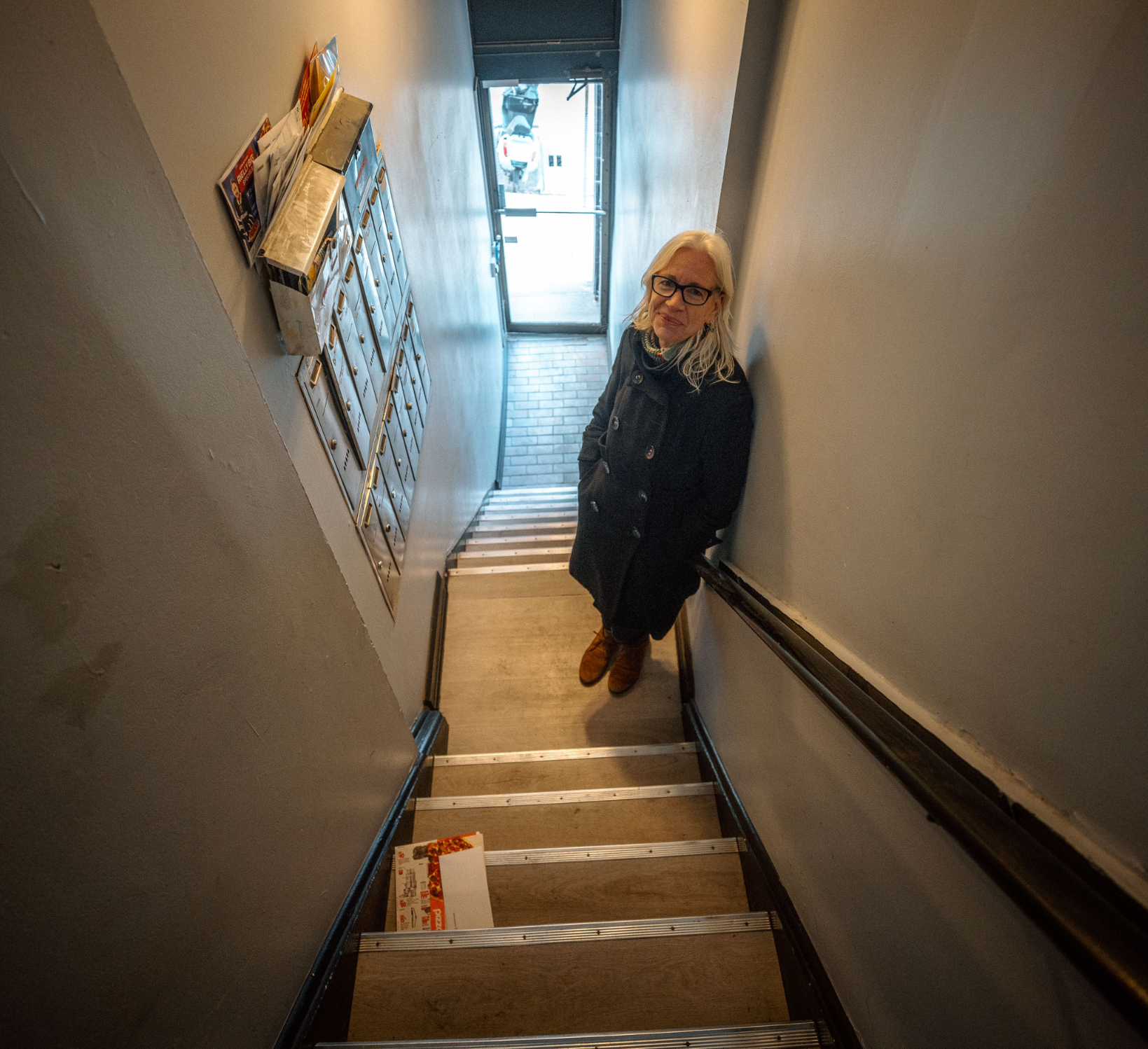
“We used to have dances in the streets, or big tables with meals outside,” says Dominique Russell, a longtime resident of Toronto’s Kensington Market. “Community meals and making jam together and canning.”
But in more recent years, she says, “a lot of our energy has been occupied by fighting.”
That’s because Kensington Market is the site of relentless gentrification. Small, local businesses are being priced out of their shops and waves of renovictions are pushing renters out of their homes.
“The neighbourhood is eclectic and vibrant, and that comes precisely from these contributions that often go unrecognized. When people are uprooted, they lose that community — and the community loses,” says Dominique.
That’s why Dominique co-founded the Kensington Market Community Land Trust (KMCLT), an organization working to preserve what makes the neighbourhood vibrant and special, and to make sure people of all income levels can afford to live there at all. The organization’s mandate is to buy property in the neighbourhood, keep it out of the hands of speculative investors who want to renovate units and jack up rent prices, and continue to rent it out at affordable rates.
In 2021, KMCLT bought a building at 54-56 Kensington Avenue for a total of 12 residential units and five commercial units. “That was an amazing victory. We’re pleased to have this stake in the neighbourhood, and hope to grow from there,” says Kevin Barrett, who co-chairs KMCLT’s board with Dominique, and is a decades-long member of the Kensington Market community.
Now, they’re looking to repeat that success, with the help of community bonds.

KMCLT is raising up to $2 million from supporters of their movement, through community bonds. (New to the world of community bonds? Learn more here.)
That $2 million will go toward an acquisition fund, which will help the organization act quickly when new properties come on the market. It’s important to have this kind of capacity to compete with investors who want to renovate, evict tenants, and hike rents, says Kevin. “It’s a very explicit attempt to trap capital and resources in the neighborhood as a way to shift the structure of the real estate market.”
And their pitch to prospective investors is simple, says Dominique: “Collectively, we can do what we can’t do individually, and that is to assure ourselves some kind of housing security and the right to stay in a neighborhood.”


Étape 1 : Apprendre
For organizations like the Kensington Market Community Land Trust, which has a committed community of supporters behind them, community bonds can help them mobilize their network for financial support.
But it’s not quite as simple as that. Raising community investment is a process that requires organizations to have a solid business model and be prepared to take on debt. That’s why each organization raising community bonds, with Tapestry’s support, starts with a learning phase. In it, they participate in an introductory workshop that helps them determine whether the community bonds model is right for them.
Zack Bradley, the land trust’s Development Manager, says it’s been helpful to understand the nuances of community finance. “Community bonds give you more flexibility” than traditional debt, he says. “We can choose the terms, the length, the amounts, but there’s still a working agreement you’re making with your community, or with the investors…It aligns with a lot of our values, but it also is very serious.”


Étape 2 : Préparer
Once organizations receive their readiness assessment and decide to move forward with a raise, Tapestry helps them with the process of preparing all the necessary documents, including a five to 10 year business plan, an offering statement, a bond term sheet, and a trust agreement.
At this stage, organizations also consult with their communities and their potential investors. They need answers to crucial questions, like what kinds of terms investors are open to and how much their average community member might invest.
“The first time we did a consultation…there was a lot of really big energy, like, ‘I don’t want to invest $1,000. I want to move all my TFSA investments into community bonds with you,’” says Kevin. “While there are a lot of challenges with the campaign, that’s the thing that keeps me going in the longer term and seeing the possibility — of this being the beginning of growing something big.”
And it’s true that raising community investment is not without challenges. The team acknowledges the resources necessary to pull off a community bond campaign: Zack is their only full-time employee, and spends much of his time preparing for the campaign. They’ve also just hired a part-time employee to manage the raise.
These are upfront investments that, in the short term, take away from the money they can put toward their acquisition fund. But the team believes it’ll pay off.
“I have big dreams about how it could work if we could scale it,” says Kevin. “The difference between us and the speculative investors that are extracting money from the neighborhood is that those guys have a big pot of money, so when something comes available, they can jump. I would love to see us have a big enough pool of capital that we could move quickly to be an actor in the real estate market.”


Étape 3 : Lever
Now that their campaign has launched, KMCLT is pounding the pavement, getting the word out about their raise and, more broadly, advocating for more affordable housing and commercial space.
Community bonds can be a powerful tool for this kind of advocacy. Having a community of supporters who are, quite literally, invested in their mission will help KMCLT demonstrate concretely the weight of the neighbourhood’s affordability crisis.
Dominique wants to be clear about the message they’ll send. “The bond allows us to do what the government should be doing,” she says, which is making sure people are housed. “But we still need the government to take their responsibility to house their citizens seriously.”


Meanwhile, other organizations are looking to KMCLT to see how their campaign pans out. Kevin says the land trust is part of a network of similar organizations across the country who are also looking for ways to raise capital — and Kensington Market is one of the first land trusts to pursue the community bonds model. (The Ottawa Community Land Trust is another!)
“I think there’s a lot of eyes on the possibility [of community bonds] as we try to figure this out,” Kevin says.
